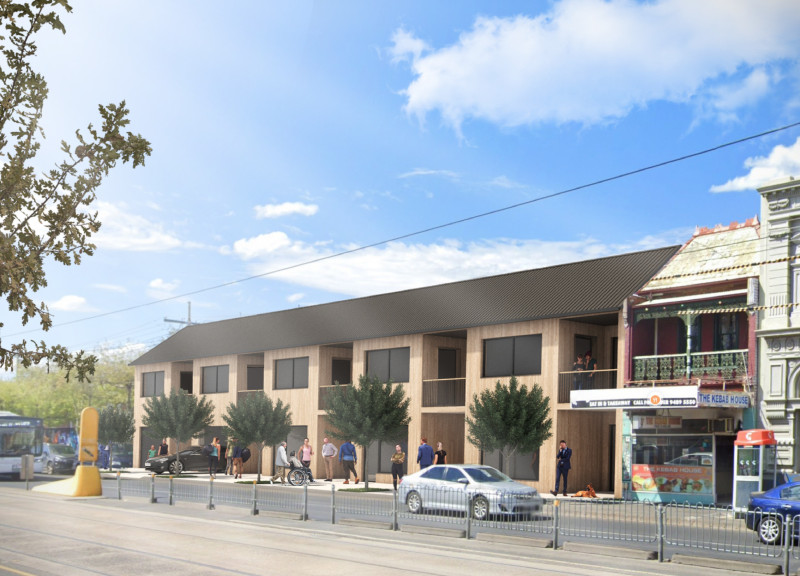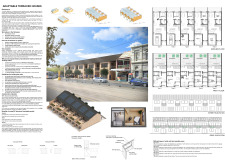5 key facts about this project
The design project focuses on adaptable terraced houses located in Melbourne, a city facing a high demand for housing due to its growing population. The approach centers on infill development on brownfield sites. By utilizing these previously used areas, the project aims to revitalize neighborhoods while creating efficient and compact living options for various residents.
Accessibility and Flexibility
The design emphasizes accessibility for all residents, including those with mobility challenges. Each housing unit features a ground-level entrance and adaptable interior spaces that cater to changing needs. Private outdoor areas, such as rear patios and upper-floor terraces, enhance the living experience, offering personal spaces for relaxation and social interaction. These features contribute to a sense of community while providing necessary outdoor access.
Construction Techniques
Structural insulated panels, or SIPs, are the primary material used in construction. These panels consist of two layers of engineered timber enclosing a core of polystyrene foam for insulation. This combination offers excellent thermal performance. Using SIPs allows for a quick construction process, which helps reduce waste and save time. The focus on efficiency in both materials and methods supports sustainable building practices.
Sustainable Features
The design incorporates sustainable elements, such as solar panels that lessen reliance on the power grid and rainwater tanks designed to handle potential water shortages. These features improve the environmental performance of the housing units and show a commitment to responsible urban living. Additionally, mixed-use functions integrated into residential areas further promote local businesses, contributing to a vibrant neighborhood atmosphere.
The layout encourages community interaction by featuring fronts and backs that engage directly with the public spaces around them. This setup fosters a strong identity for the development and invites residents to connect with their surroundings. The thoughtful integration of design elements provides a foundation for a lively community environment that supports various lifestyles.



















































